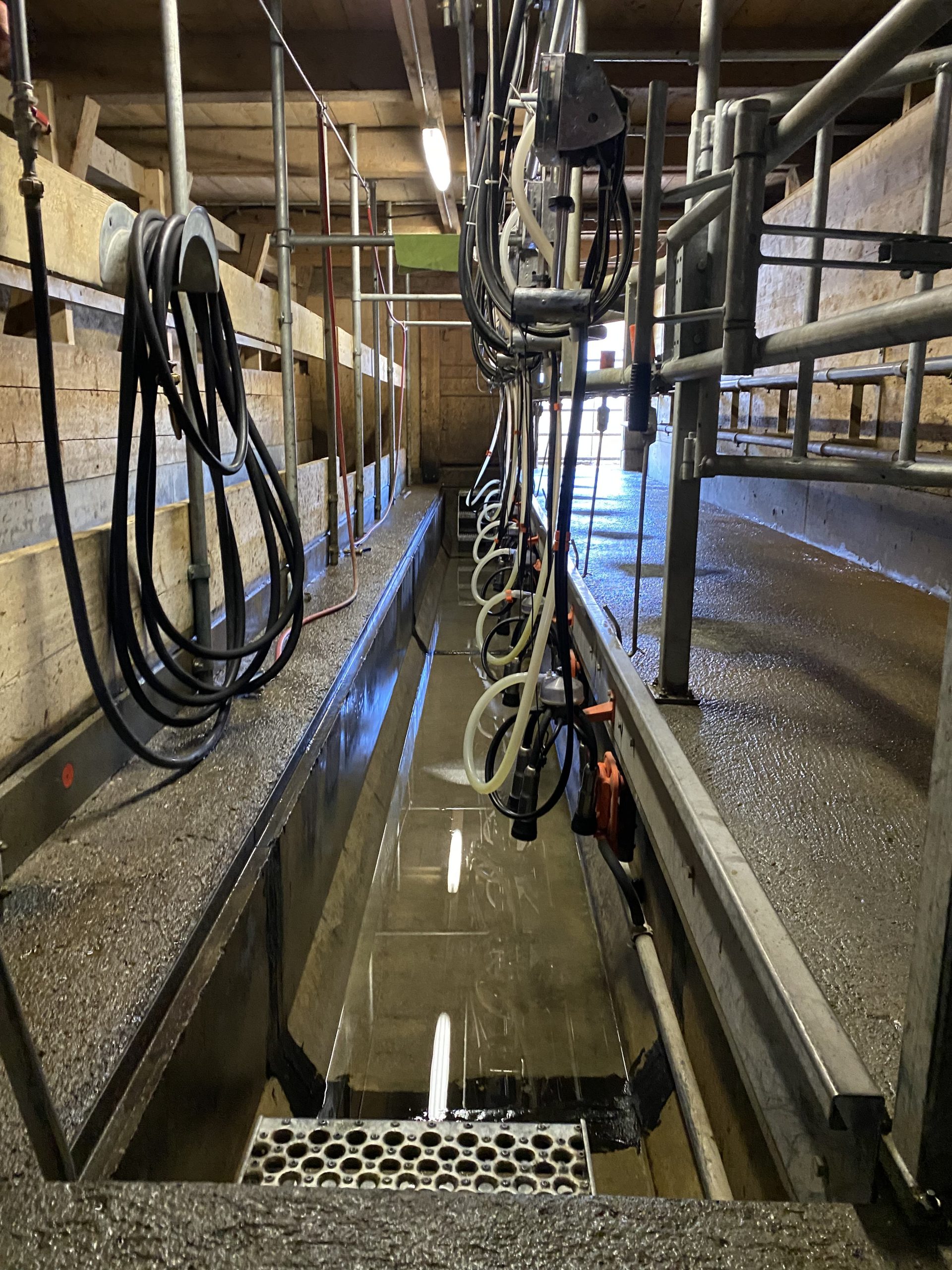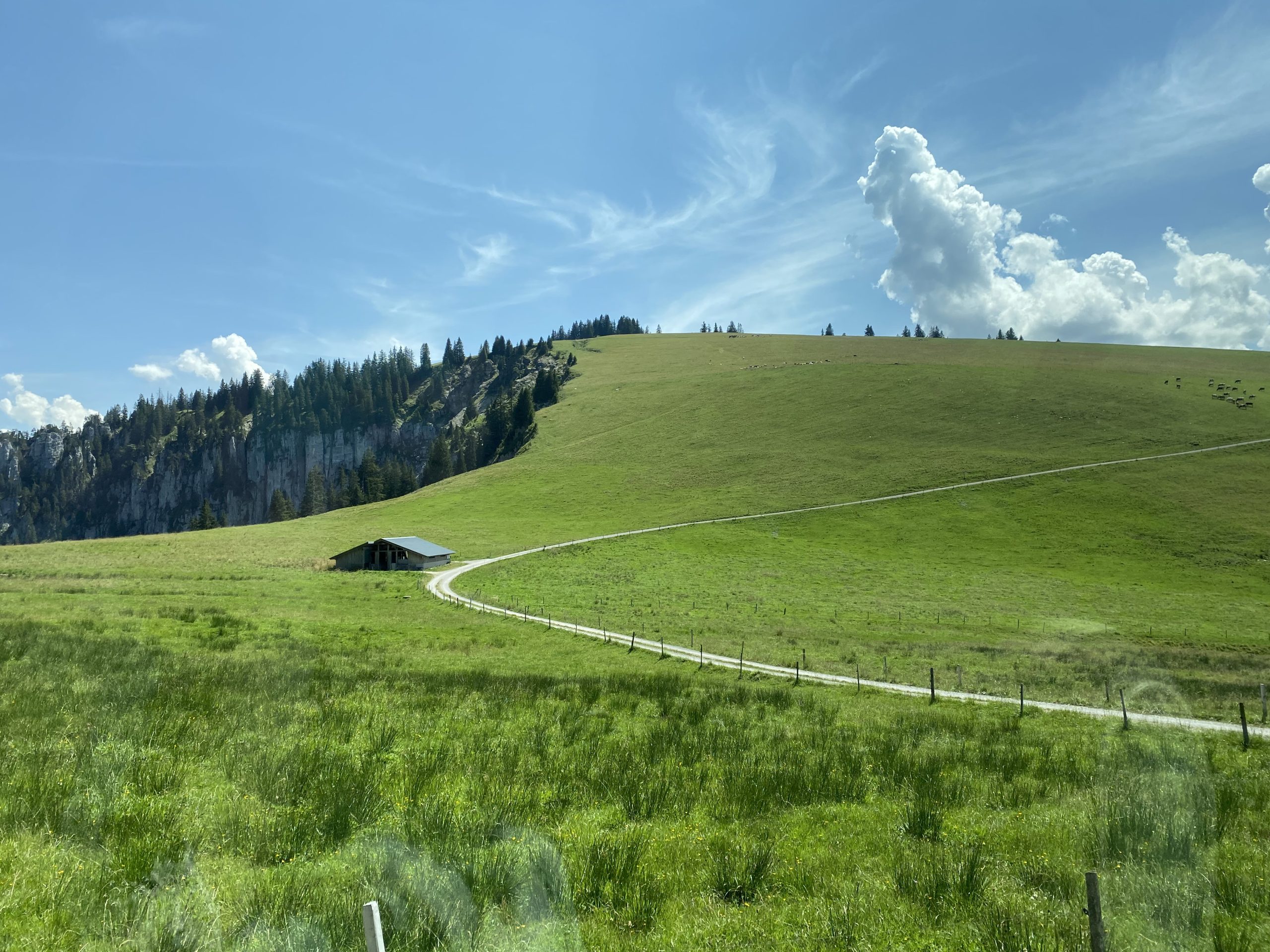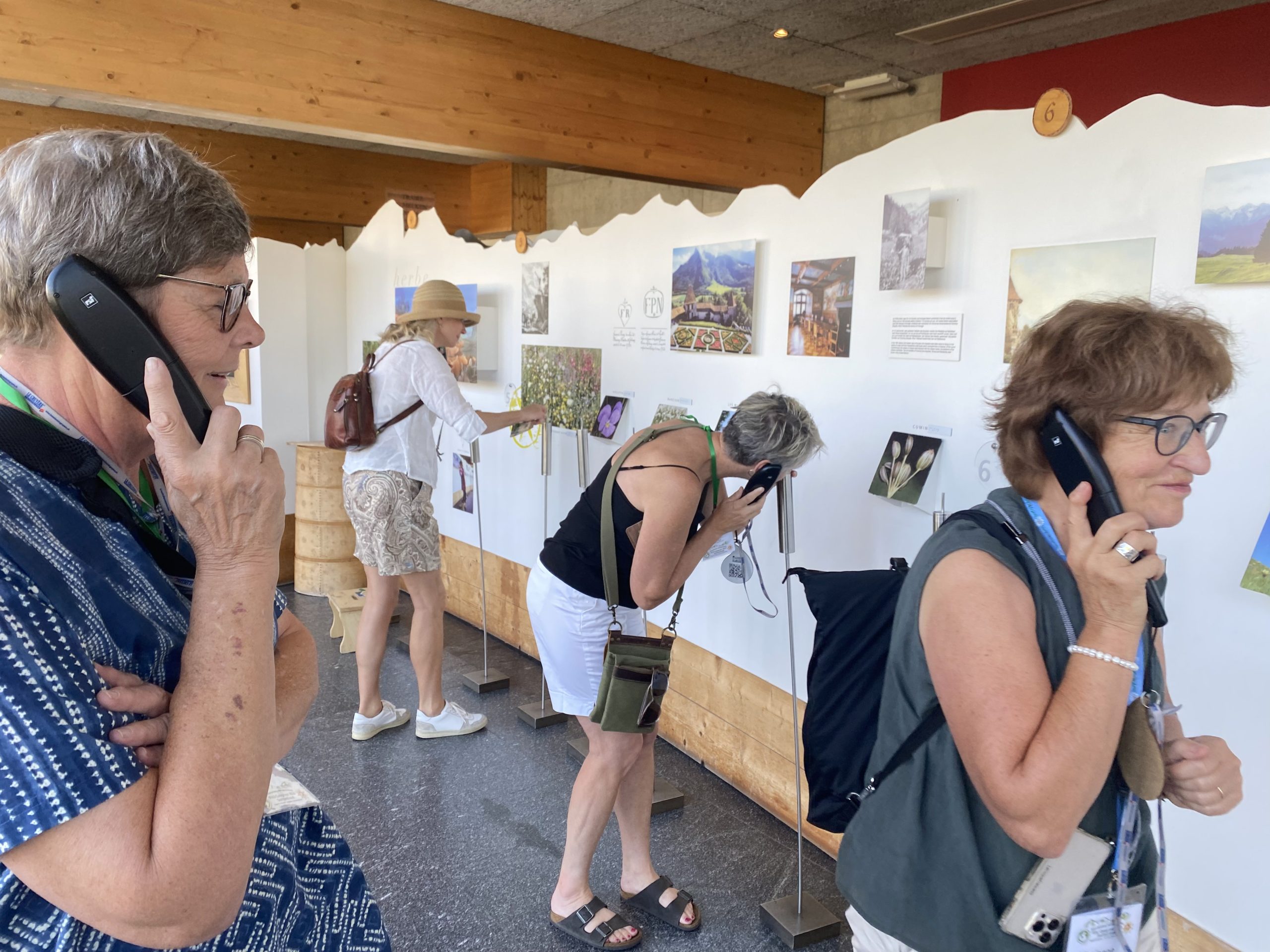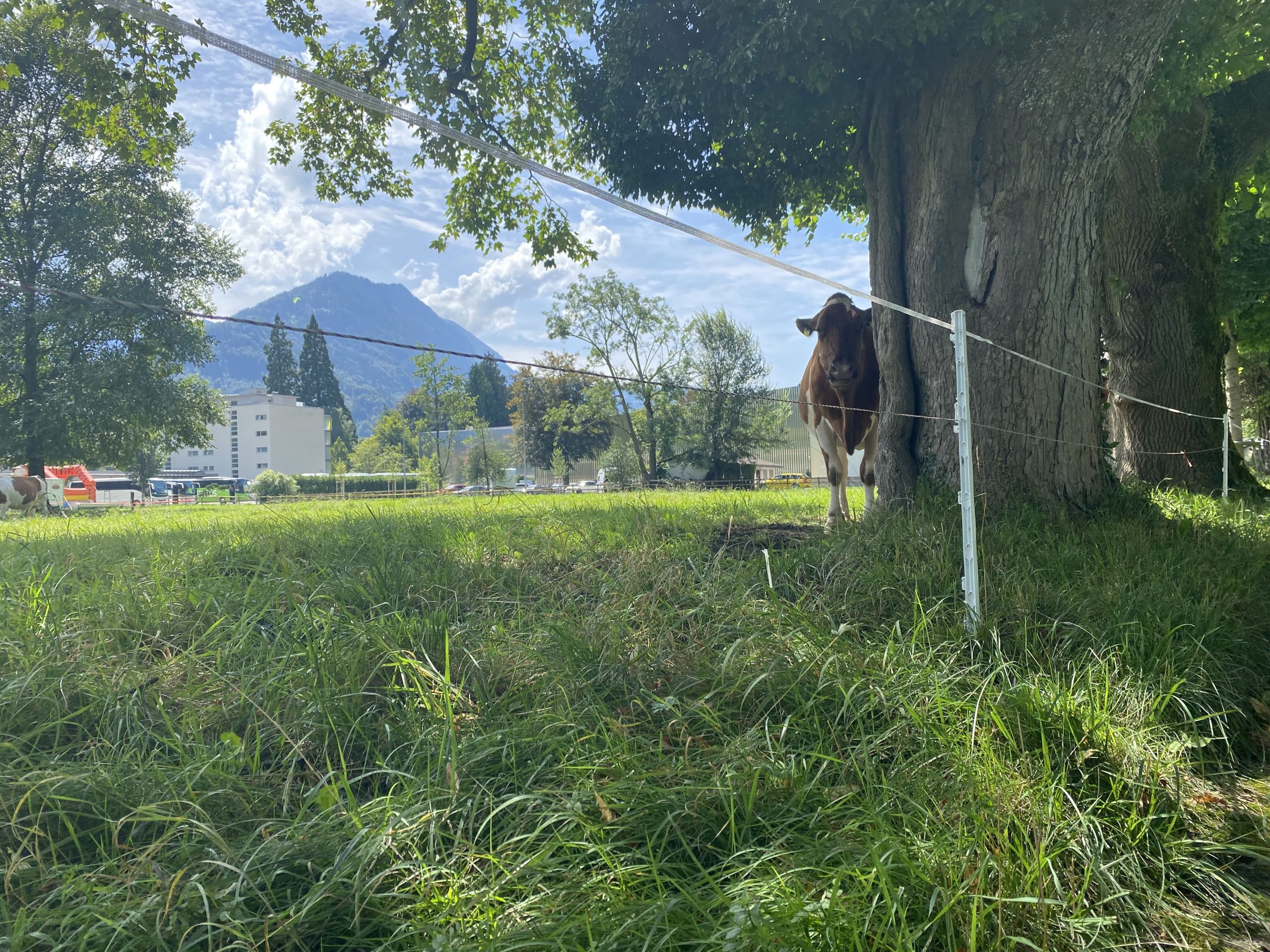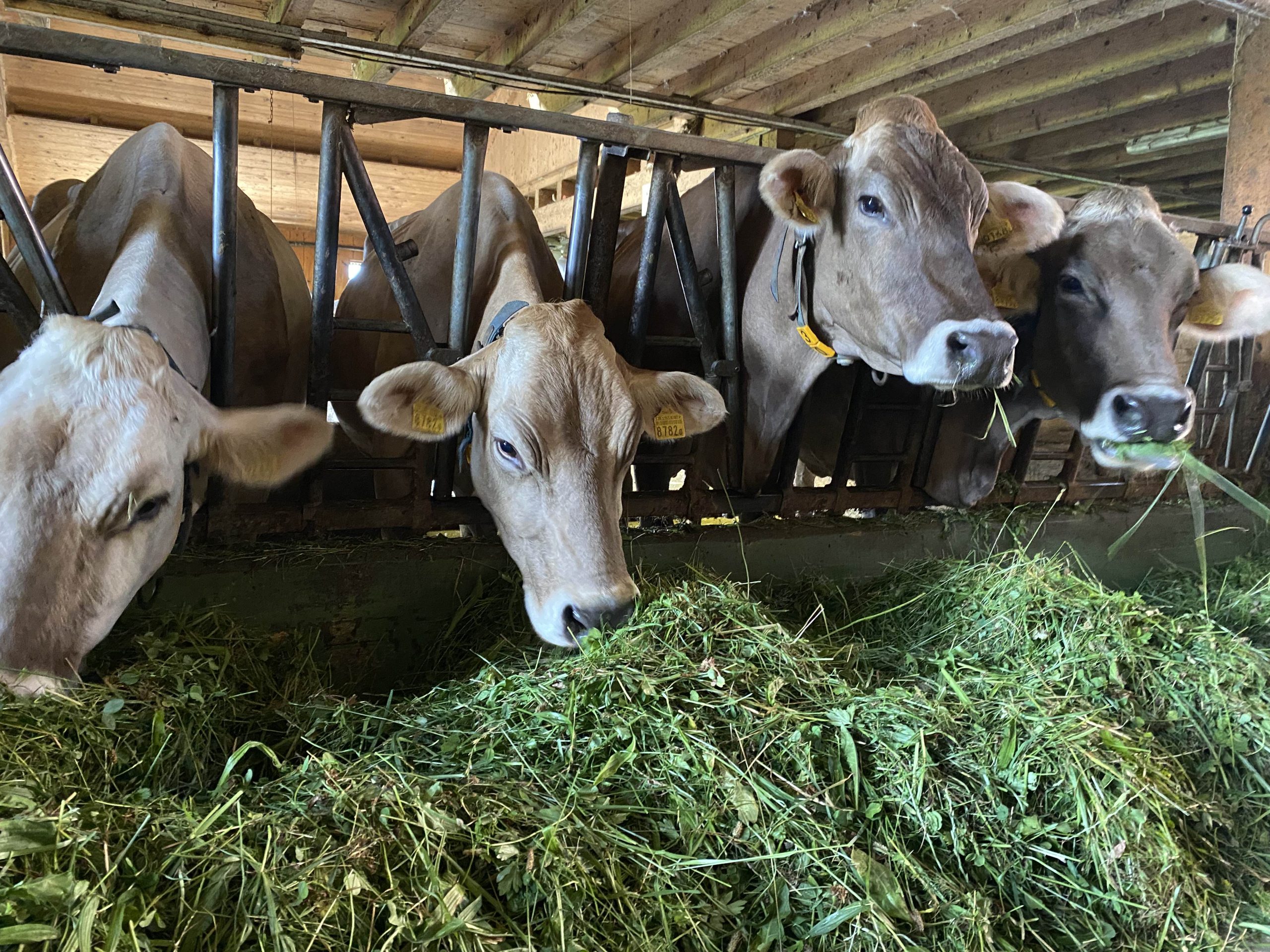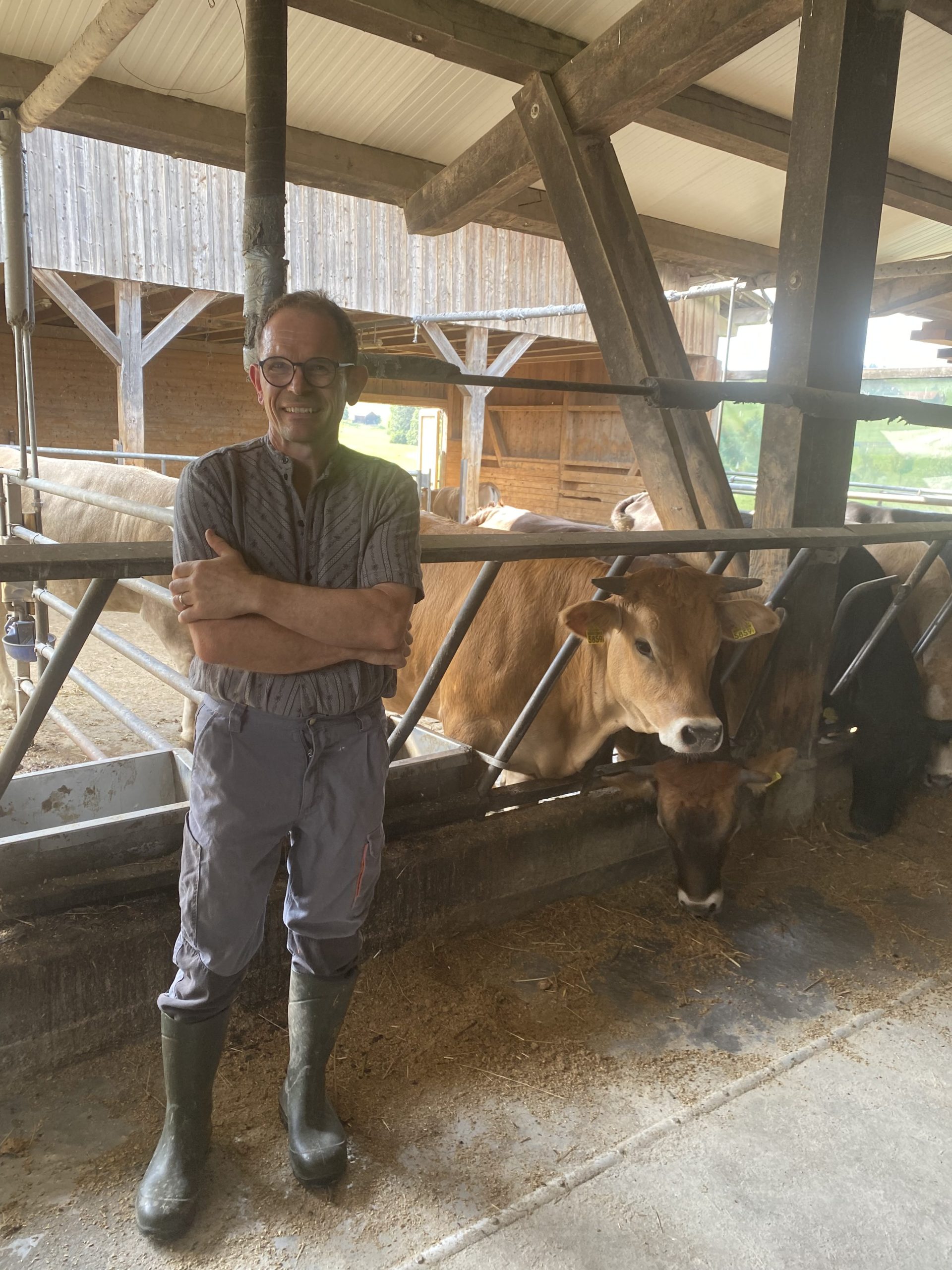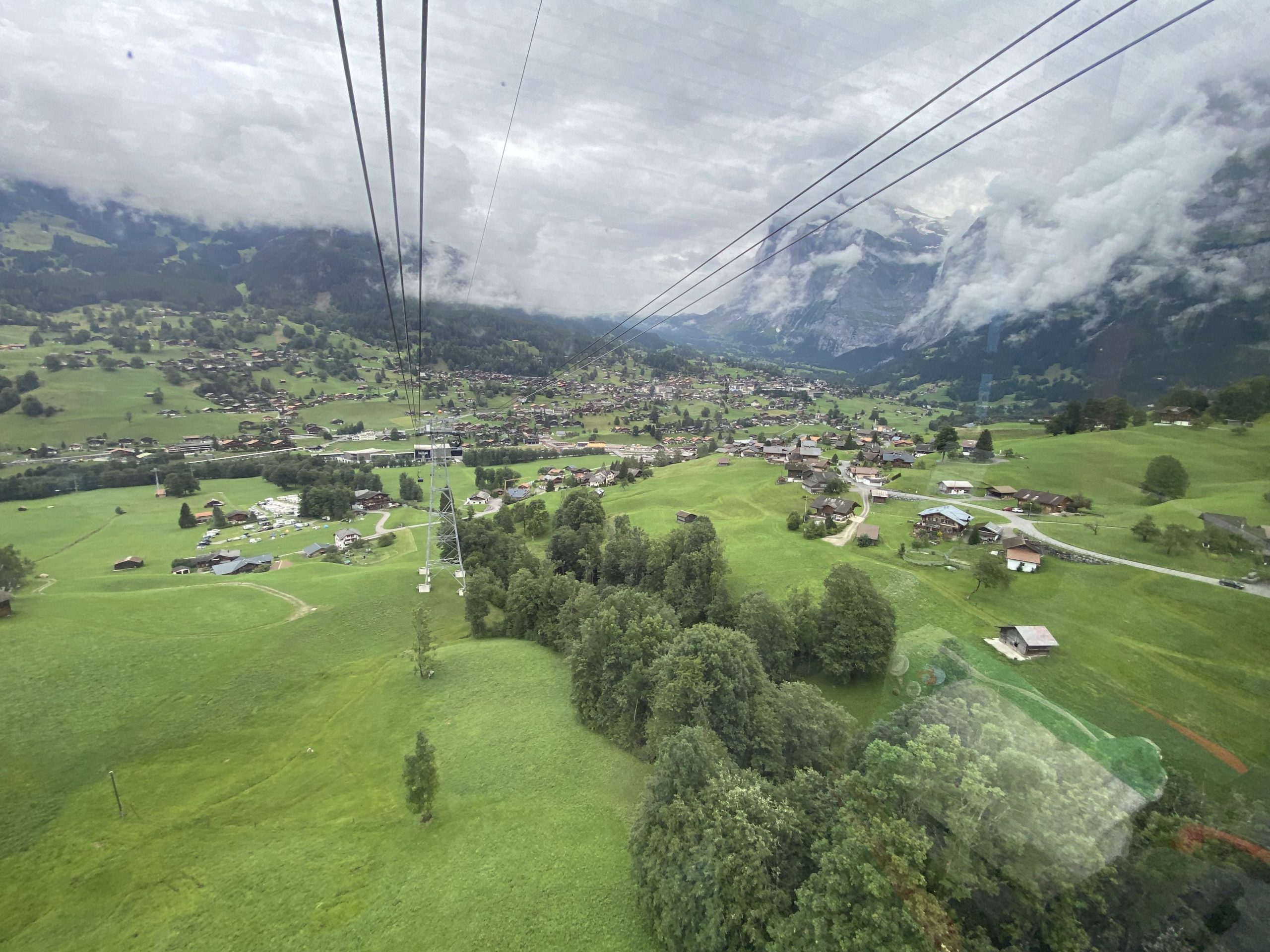By Courtney Leeper Girgis, ROOTED Communications
On my first day in Switzerland, I found myself on a bus traveling a narrow mountain road with turns that grew sharper the further up we went. We were fine as long as we did not look down or meet a car on the path.
Of course we did meet a car, and we all watched intently as it backed up and somehow found a place to pull over so our bus could creep around it. Relief and appreciation of our bus driver’s skills were palpable among my bus mates, but those emotions soon gave way to awe.
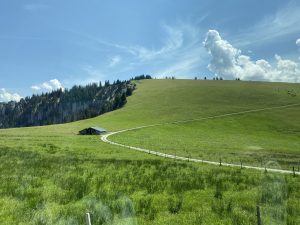 We had emerged on top of an alp, and it looked like something out of a fairy tale: so green, higher mountains in the background, tall pine trees, and, to really sweeten the deal for us aggies, cows. Holsteins and Swiss Fleckviehs grazed in small groups in the distance. Others came right up the road to watch us drive by.
We had emerged on top of an alp, and it looked like something out of a fairy tale: so green, higher mountains in the background, tall pine trees, and, to really sweeten the deal for us aggies, cows. Holsteins and Swiss Fleckviehs grazed in small groups in the distance. Others came right up the road to watch us drive by.
This was my first taste of Switzerland during the International Federation of Ag Journalists Young Leaders Program in the days leading up to the IFAJ Congress, and it was clear we were in for an incredible experience.
Our ultimate destination that morning was a dairy on top of the mountain, where twin brothers shared with us their family’s operation. Their grandfather started the farm in 1920, and the family had been making cheese since 1948.
We got to see them make cheese the traditional way, and taste it, too. We walked through their dairy parlor and heard the clanging of cow bells as cows grazed the mountainside.
Later, on a tour with the IFAJ Congress pre-tour folks, who spent time in Geneva and Lausanne before coming to Interlaken, where the Congress was held, we saw cheese being made on a larger, commercial scale in a Gruyère cheese factory. We heard the passion of cheesemakers who are protective of the way their cheese is made and marketed (as in “real” Gruyère cheese only comes from the region surrounding the town of Gruyères in Switzerland’s Fribourg canton).
The rest of the week was filled with more tours (an apple orchard; massaged beer-fed beef cattle; a dairy specializing in making yogurt) and educational sessions, where we heard from high-profile agriculture leaders in Switzerland, including CEOs of the Swiss-based companies Syngenta and Nestle.
Every stop and every session during the Congress week presented a different piece of the puzzle that is Swiss agriculture. Each one built on the other to paint a picture that I now get to use to ask better questions and tell more comprehensive stories that serve my ag audiences.
Here are a few of the highlights of what I learned:
- Switzerland is extremely small compared to the U.S. It’s about the size of Vermont and New Hampshire put together. I was impressed that a local government official gave a brief introduction to the region at several of the farms we visited, and those officials and the farmers seemed like good friends. The atmosphere was down-to-earth, and there was a sense that these small communities band together and make decisions together. Interestingly, farmers often lived right in town with the rest of the community. You could tell which houses were theirs because there would be a tractor in the garage or hay bales sitting nearby.
- Switzerland is expensive. Switzerland is the most expensive country in Europe, with four of its cities, Zurich, Geneva, Basel, and Bern, ranking third through sixth for most expensive cities in the world, according to 2024 cost-of-living data from global consulting firm Mercer. About 8.7% of a Swiss family’s household income goes to food, according to the World Economic Forum, compared to 6.4% in the U.S. There seems to be an emphasis on local or regional foods as well as organic and the many other labels available to Swiss consumers, although one speaker pointed out that what consumers express that want in surveys is oftentimes different from what they’re willing to buy at the store.
- Agriculture is highly subsidized in Switzerland. About half of a Swiss farm’s revenue comes from subsidies. The general consensus was that Swiss farmers wouldn’t survive without these. Subsidies are provided for maintaining biodiversity on a certain percentage of their land and for other practices, like taking dairy cows up to the alps to graze. For every cow that grazes alpine pastures 100 days out of the year, farmers can receive a direct payment of 600 francs, or a little more than $700 USD. With these subsidies come a great deal of regulation.
- Cows are something of a national treasure. One young Swiss woman I talked to during the Congress did not grow up in agriculture yet she talked about how her dad made her wooden cows as toys when she was a child. I was confused and wondered if I had misunderstood that her family did farm. She said, “no,” and explained cows are a common toy. Cows are iconic in Switzerland, just part of the culture. But things are changing. My Young Leaders group toured a facility that makes meat alternative products from vegetables and learned there is growing concern about animal production because of greenhouse gas and climate change issues. Some Swiss are questioning whether the government should subsidize grazing on the alps.
- Ballot initiatives are concerning. We’ve seen popular ballot initiatives affect the agriculture business here in the U.S., but imagine this: In Switzerland, if you can collect 100,000 signatures on a popular initiative, it will go to a vote. It could be about anything, and agriculture is not immune. A few years ago, there was an initiative that sought to “prevent farmers from opting to keep hornless animals on purely economic grounds.” The initiative failed (narrowly), but with changing consumer opinions, there are concerns among those in agriculture. Very soon, on Sept. 22, Swiss citizens will be voting on the popular initiative, “For the future of our nature and our landscape,” which calls for “more money and more protected areas for biodiversity.” Switzerland already invests around 600 million francs per year (more than $708 million USD) in biodiversity, including through subsidies to farmers. Proponents say Switzerland needs to do more to curb biodiversity loss, and opponents say the measure is too extreme and would make about 30% of the land untouchable. We’ll see how their voting turns out.
- Farmers are farmers. The best part of the trip was seeing that farmers are farmers, no matter where they live. They are bright and passionate. They care about their families, land, and livestock. They manage complex biological systems in complex economic and political environments, and they’re always evaluating the next step toward a better business.
I know I do not have all the pieces of the puzzle. That is, after all, the most energizing part of journalism to me. There’s always something new to learn, and always another perspective to hear. However, attending the IFAJ Congress was such a fantastic way to gain a greater understanding of agriculture.
The Congress not only gave me the opportunity to visit amazing places, like the alpine dairy, and hear interesting people speak. It brought me in contact with ag journalists from all over the world. Part of the experience was learning about their countries as well as learning about Swiss agriculture through their eyes.
If you have the chance, I highly recommend you try to make it to an IFAJ Congress. Take advantage of the IFAJ membership you have through Ag Communicators Network. The stipend provided through the Professional Improvement Foundation and the Young Leaders Program made it possible for me to go to Switzerland this year, and I am grateful. And I am hooked. I look forward to attending more Congresses in the future. – Girgis is a member of the ACN Board of Directors
View Courtney’s photos from Switzerland below.



